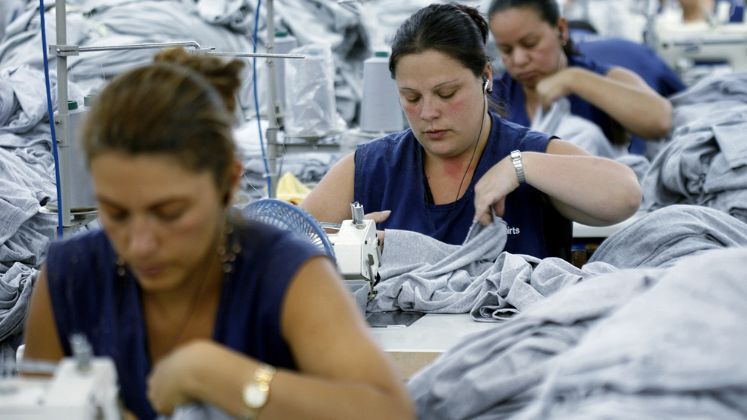
A new analysis from S&P Global claims that the main clothing manufacturing and retail companies are reducing their earnings projections and laying out preparations to lessen the effects of US import tariffs.
With US seaborne apparel imports rising 14.5% year over year in April before reversing in May, S&P Global observes evidence of front-loading of stocks. However, as businesses try to avoid possible tariff hikes in July, June saw a sequential increase of 27.3% from May.
Lower US import prices are one indication of burden sharing. Clothing imports from mainland China decreased 4.1% in May 2025 compared to February, while imports from Mexico and Latin America decreased 3.6% and 2.9%, respectively.
The percentage of mainland Chinese companies in US garment imports dropped from 33.8% in 2017 to 21.0% in the last 12 months as a result of apparel companies gradually reorganising their sourcing for the US market. Businesses strategically reallocate their current sources through multisourcing. As is being sought for EU supply, strategic investment in more reshoring—which can involve sourcing locally—seems to be on pause.
Businesses have stated that the full effects of tariffs will only be seen during the winter and back-to-school clothing sales, which makes it more difficult to schedule inventory and imports to minimise tariff exposures and guarantee the newest fashions are available. Data from Market Intelligence indicates that US seaborne imports of apparel and footwear have a prolonged peak season, peaking in July and falling off in November.
With shipments in the first quarter of 2025 up 12.7% year over year and continuing to grow in April, there is evidence of consistent frontloading. According to more current data, there was a notable 12.5% turnaround in May, with shipments to the west coast especially declining by 20.4%.
Due to hurried shipments before the July tariff deadline, imports in the first 26 days of June increased 27.3% over May’s level, even though they only increased 4.6% year over year. This is in contrast to the typical seasonal shift of 8% during the previous 10 years.
US imports of clothing and footwear are predicted to decline as a result of a reversal of the inventory build-up and a decline in demand should rising costs impair purchasing power. After accounting for inflation, Market Intelligence predicted that imports would fall 6% year over year in the second quarter before accelerating to a 27% decline in the third.
Businesses have refrained from raising prices because they are worried about how it may affect consumer spending. Consumer spending growth is predicted to decline as a result of the drag caused by tariffs. The annualised rate of personal spending on apparel and footwear is predicted by Market Intelligence to decrease by 0.3% from the first quarter of 2025 to the second quarter, and the year-over-year growth is anticipated to slow to 1.5% by the first quarter of 2026 from 3.1% in the second quarter of 2025.
According to reports, businesses are requesting price reductions from their suppliers in order to split the cost of tariffs, which are paid for in person by importers. With a 4.28% increase, the ASEAN region stood out and might be a sign of decreased tariffs and a shift away from mainland Chinese suppliers.
Supply chain restructuring has been an ongoing activity. With ASEAN and South Asia emerging as the primary winners, mainland China’s share of US apparel dropped from 33.8% in 2017 to 21.0% in the 12 months ending 30th April 2025. The percentage of mainland China in footwear decreased from 55.6% to 34.7%, whereas ASEAN, especially Vietnam, increased.
The EU places a greater emphasis on domestic suppliers than North America, which is primarily reliant on ASEAN and mainland China. In 2024, the EU accounted for 57% of imports from EU nations, compared to just 4% from North American nations.






